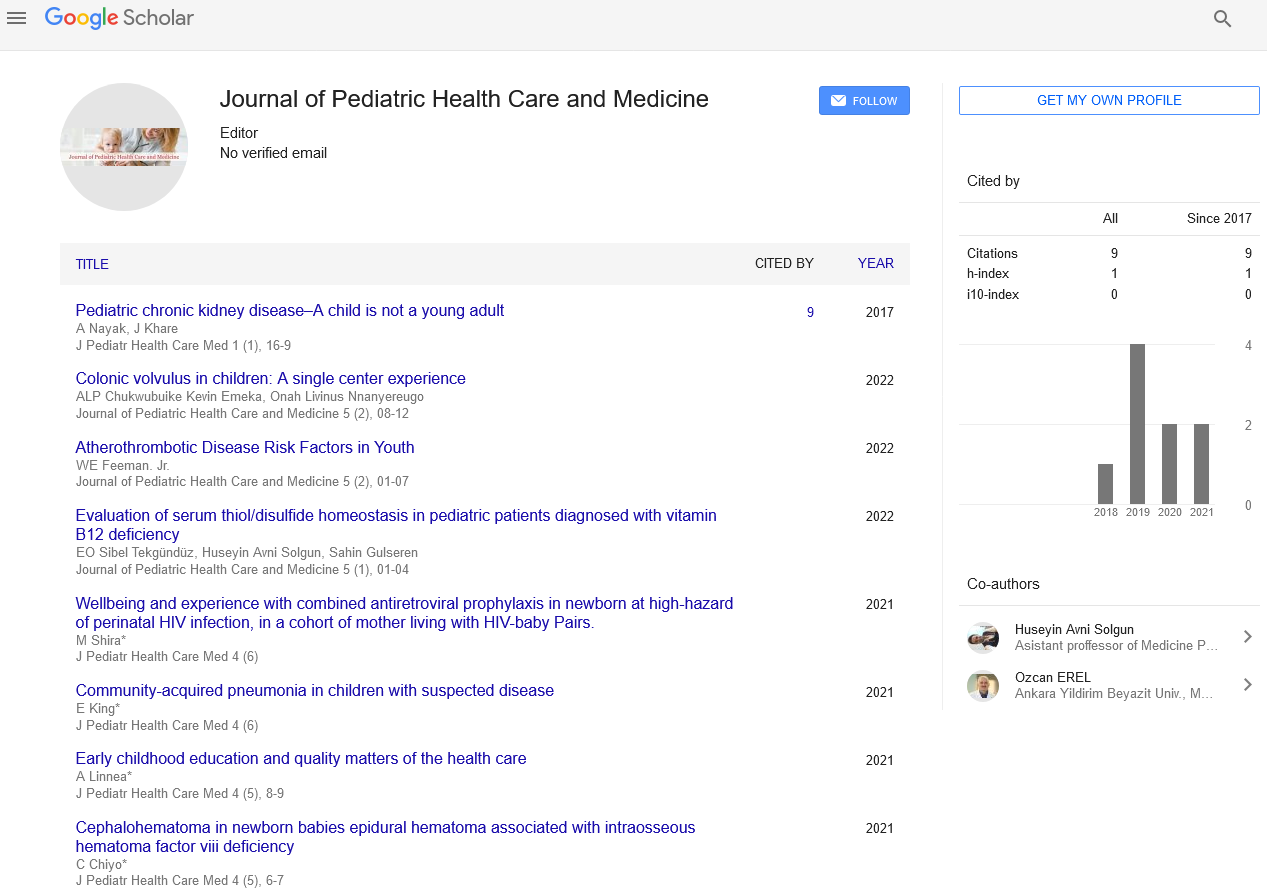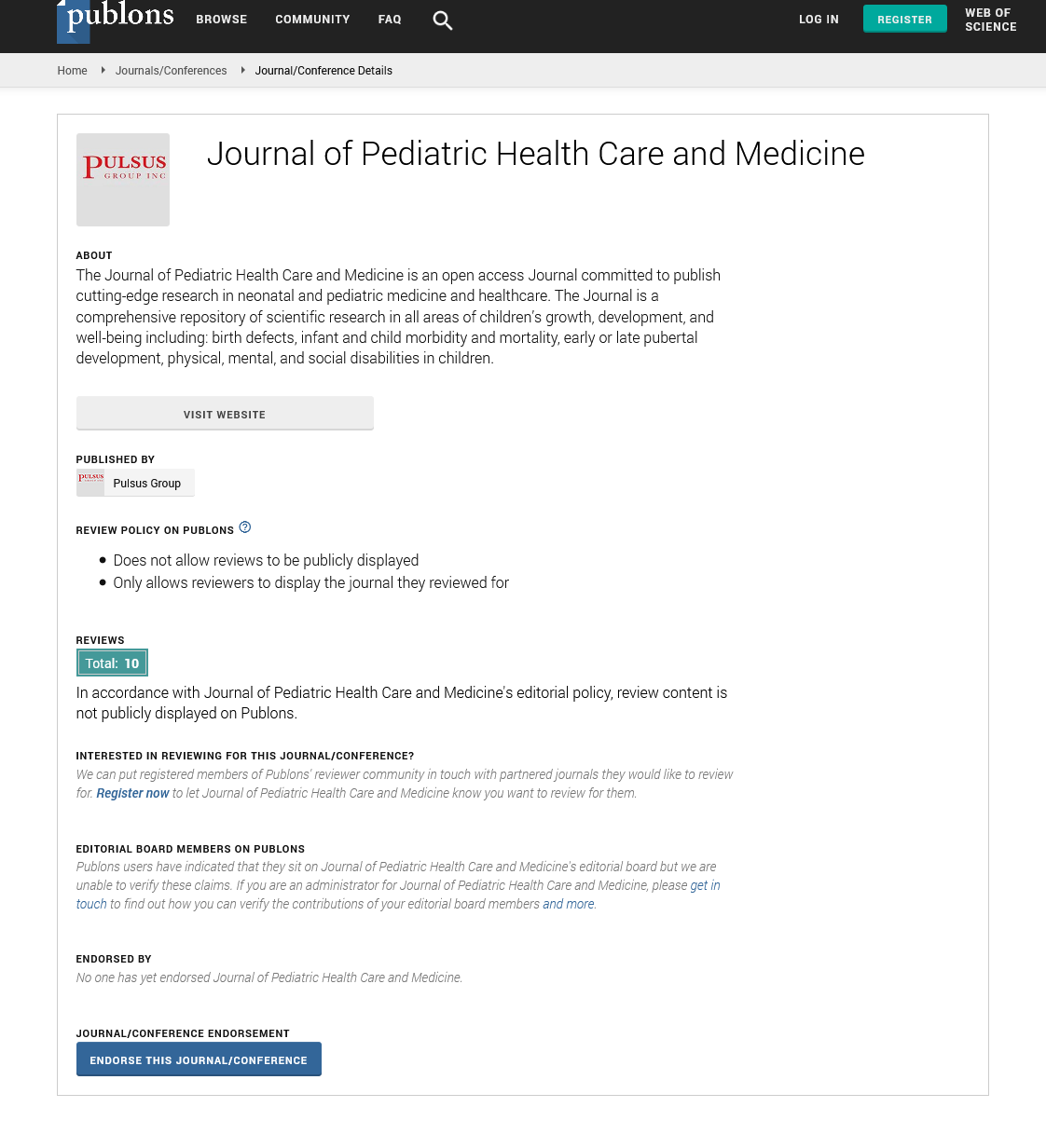Mullerian agenesis diagnosis and management
Received: 12-Feb-2021 Accepted Date: Mar 01, 2021; Published: 08-Mar-2021
Citation: None
This open-access article is distributed under the terms of the Creative Commons Attribution Non-Commercial License (CC BY-NC) (http://creativecommons.org/licenses/by-nc/4.0/), which permits reuse, distribution and reproduction of the article, provided that the original work is properly cited and the reuse is restricted to noncommercial purposes. For commercial reuse, contact reprints@pulsus.com
Abstract
Mullerian agenesis is an important cause of primary amenorrhea with normal thelarche and adrenarche. Hormonal studies including gonadotropins, estradiol, progesterone, thyroid hormones, prolactin and testosterone levels are normal. Management of these cases requires attention to the psychological aspect, sexual and reproductive issues. Creation of a vagina can be achieved either by use of dilatators or surgery. For reproduction, the patient benefits from advances in reproductive technology, and in the future uterine transplantation.
Introduction
Changing scenes have made pediatric torment the executives suppliers think past conventional narcotic administration to help mitigate pediatric agony. Recently depicted squares are being used more, regardless of whether to dodge the dangers of neuraxial sedation or to encourage prior ambulation or to limit opposite results from territorial procedures. Different adjuvants are likewise added to pediatric nerve squares to delay their belongings.
Prescriptions other than narcotics much of the time are utilized to give a multimodal absense of pain model to control pediatric agony. Regularly, these methods are mixed together in improved recuperation after medical procedure (ERAS) conventions to encourage more limited length of stays also, prior ambulation. At last, propels in innovation are permitting computer generated reality (VR) to turn into a valuable apparatus in reducing pediatric torment
Quadratus lumborum block
The quadratus lumborum (QL) is a profound muscular strength and the quadratus lumborum block (QLB) is a ultrasoundguided square that tracks down its key to achievement in the thoracolumbar belt (TLF). The TLF is a connective construction that interfaces the anterolateral stomach divider with the lumbar paravertebral space.1 The square is conceivably successful from nearby sedative washing the nerves existing in the sash or from neighborhood sedative diffusing from the TLF into the paravertebral space.
In the QLB 1, the sidelong side of the QL muscle that is in contact with the transversalis belt is targeted.1 The patient is put in the prostrate situation with a pad under the spine; a dynamically positioned test close to the iliac peak is utilized to recognize every one of the 3 layers of the stomach divider and followed until they tighten into an aponeurosis with the QL
Erector spinae plane block
The erector spinae plane (ESP) block is a provincial strategy where neighborhood sedative is infused into a plane profound to the erector spinae muscle and is used to give absense of pain to the thoracic and stomach walls.6 It has been portrayed as in fact less difficult than the paravertebral and thoracic epidural infusions and has an extra layer of security since it is more far off from the pleura and neuraxial
To play out an ESP block, a ultrasound is utilized to filter both longitudinally and dynamically here and there the thoracic spine to affirm situating of the cross over measure at the suitable level to be anesthetized.7
In treating pediatric torment, thinking past narcotics is conceivable. Territorial strategies, counting recently portrayed techniques, are as a rule progressively used to treat intense postoperative agony, with triumphs noted in the pediatric populaces. The pain relieving advantages of provincial procedures can be expanded by expansion of different square adjuvants to the neighborhood sedative. With regards to treating pediatric intense and ongoing agony medicinally, numerous different nonopioid meds have been utilized in the pediatric populaces.
Conclusion
The pain relieving advantages of provincial procedures can be expanded by expansion of different square adjuvants to the neighborhood sedative. With regards to treating pediatric intense and ongoing agony medicinally, numerous different nonopioid meds have been utilized in the pediatric populaces.
REFERENCES
- 1. Bondy J, Berman S. Glazner J, Lezotte D. Direct expenditures related to otitis media diagnosis: Extrapolations from a pediatric Medicaid cohort. Pediatrics 2000;105:72-9.
- 2. Auinger P, Lanphear BP, Kalkwarf HK, Mansour ME. Trends in otitis media among children in the United States. Pediatrics 2003;112:514- 20.
- 3. Teele DW, Klein JO, Rosner B. Epidemiology of otitis media during the fi rst seven years of life in children in greater Boston: A prospective, cohort study. J Infect Dis 1989;160:83-94.






